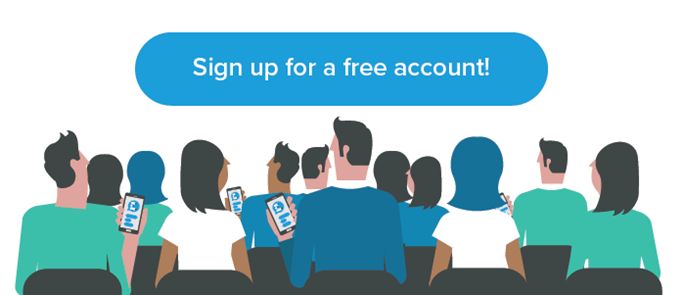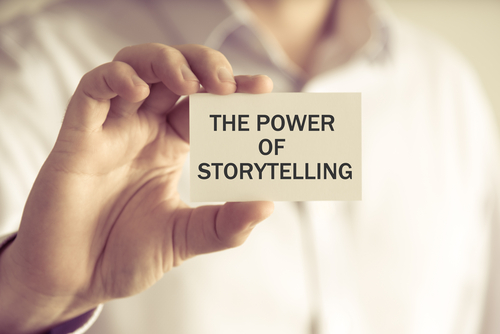Storytelling is like food for the brain. We crave stories without even realising it. Just like the food we consume for physical health, storytelling strengthens, replenishes and excites our minds. When we listen to what other people have to say and digest their stories, we simultaneously boost our own brain power, feeding our intellect with information until our appetite is satisfied. Just look at the mass media market. Storytelling rules the industry with an iron fist. Turn on the TV and you’ll hear stories told on almost every channel. Every news reel, every Netflix drama, every music video tells a story that we consume with a turnover rate so fast that most people don’t even notice how much storytelling content we devour every day.
So, how can we, as business storytellers, take our audience on this type of journey? How can you harness the power of storytelling as an instrument to engage your audience and achieve your presentation objectives? By the end of this article, we will have delivered you to the promised land of storytelling. Your voyage to storytelling expertise begins now.
The building blocks of engaging storytelling for presentations
What do all stories have in common? Before we start thinking about main characters, before we walk side by side with them as they overcome struggles, what are the essential elements of every single story? A beginning, a middle and an end. But corporate storytelling ain’t no ‘once upon a time’ business. Let’s break this down for you.
1. The beginning
Don’t go out with a bang, go in with a bang. Start your presentation strongly by addressing something relatable. Talk about what’s going on now in the industry, acknowledging the current status quo. Highlight the pitfalls of the current situation, with a focus on the challenges posed by the way things are right now. But tease your audience with a silver lining. Start to leave a trail of clues to set up the solution you’re going to offer them.
2. The middle
The middle is where the tension builds and finds its resolution. Move back and forth between the challenges they’re facing now and your ideas for how to resolve the crisis.
Explore the reasons why your solution is the best antidote to their problems and fortify your arguments with real-life examples.
3. The end
Wrap your presentation up with a clear call to action and a reminder of your offering. Hark back to their challenges and finish with a killer closing statement. What conflict did your main character overcome? What transformation has occurred? How have complications been simplified? End by emphasising the resolution. This is your last opportunity to make your message heard so make sure you’re leaving it on a resounding, unforgettable and positive note.
Find your niche and own it
Now that you’ve got the structural bit down, let’s move onto some of the most popular methods for driving audience engagement. We spoke about the prevalence of storytelling in the introduction. It’s an oversaturated industry and you’ve got to carve out your own identity if you want to be recognised as a big player. Think about what you have to offer. If it’s already been done, how can you build on the idea? If there’s lots of competitors, what are they doing badly? Can you do it better? People are attracted to things that are unusual. The more different you are, the better chance you have of maximising engagement. Be unconventional, be unique and find what sets you apart from the rest.
Keep it personal
Picture your audience. Who are they? Consider the type of event you’re speaking at and the type of people that this event draws in. Painting a mental profile of the kind of person you’ll be talking to is a fool proof way of helping you tailor your story to the tastes of the people listening. Think about their industry, their jobs, their day-to-day lives and their interests. How will your offering transform their lives? What issues are you solving? How can you help them? Answering these questions will give you a gold mine of content to weave into your story. Keeping the story personal will grab the audience’s attention; if they can see how your ideas fit into their lives, you shouldn’t have to work hard to keep them engaged, your ideas will do it for you.
Storytelling is a magical force. Get it right and audience engagement won’t be an objective you have to struggle for, it’ll happen all by itself.
To read more tips for delivering engaging presentations head to the Buffalo 7 blog here.
This article was written by Buffalo 7. Buffalo 7 is a UK-based specialist PowerPoint presentation design agency that helps the world's best brands to deliver incredible, engaging presentations.





